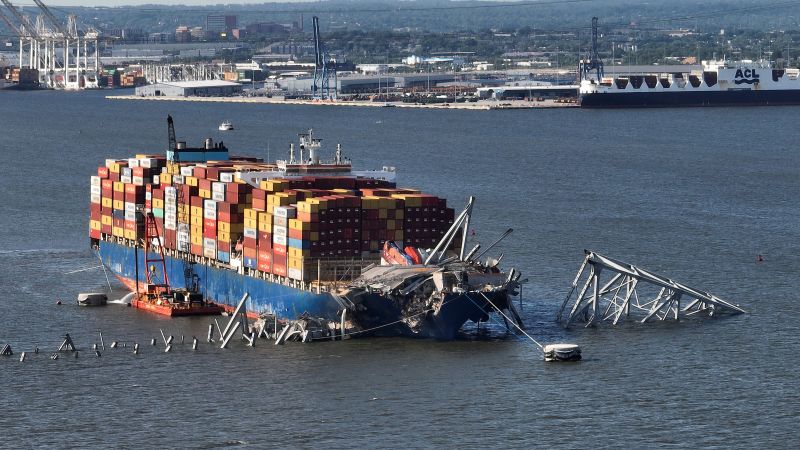A cursory reading didn’t show anything remarkable. Basically what everyone guessed.
About 0125, the Dali was 0.6 miles—or three ship lengths—from the Key Bridge
when electrical breakers (HR1 and LR1) that fed most of the vessel’s equipment and
lighting unexpectedly opened (tripped) (see figure 7). This caused the first blackout
(loss of electrical power) to all shipboard lighting and most equipment, including the
main engine cooling water pumps (which controlled engine cooling water pressure)
and steering gear pumps.
The main propulsion diesel engine was independent of the vessel’s four diesel-
driven electrical generators; however, the loss of electrical power to the pumps
required for its operation resulted in the main engine being automatically shut down,
and the vessel lost main propulsion, meaning its propeller stopped.
The loss of electrical power stopped all three steering pumps, and, therefore,
the rudder was unable to be moved. At the time, the ship was on a heading of 141.7°,
a course over ground of 140.8°, and speed over ground of 9.0 knots, with the rudder
amidships (0°).
< snip >
According to the crew, the emergency generator started and connected to the
emergency bus (its breaker would have closed) shortly after the vessel lost electrical
power. At this time, the NTSB is still investigating the exact time when the emergency
generator started and connected to the emergency bus. Typical for oceangoing
vessels, the Dali had an emergency diesel generator (in addition to the four
generators) that could be configured to automatically start and connect to the
emergency bus if normal electrical power and lighting were lost. When the
emergency bus was powered, emergency lighting, navigation and radio equipment,
alarms, and other emergency equipment would have been available, and the
designated emergency steering pump (no. 3) would have been available to turn the
rudder at its low-speed setting. (When operated alone using emergency electrical
power, steering pump no. 3 was designed to run at a lower speed, turning the rudder
at a slower rate than with all pumps.) However, without the propeller turning, the
rudder would have been less effective.
The question seems to be why did those electrical breakers tripped. The report mentions two power outtages while at dock but whether those tell us something or are unrelated they do not know yet.
On March 25, about 10 hours before leaving Baltimore, the Dali experienced a
blackout (loss of electrical power to the HV and LV buses) during in-port
maintenance.7 While working on the diesel engine exhaust scrubber system for the
diesel engine driving the only online generator (generator no. 2), a crewmember
mistakenly closed an inline engine exhaust damper. Closure of this damper
effectively blocked the engine’s cylinder exhaust gases from traveling up its stack and
out of the vessel, causing the engine to stall. When the system detected a loss of
power, generator no. 3 automatically started and connected to the HV bus.
Vessel power was restored when crewmembers manually closed HR2 and LR2.
Generator no. 3 continued to run for a short period, but insufficient fuel pressure caused its speed to decrease, and its breaker (DGR3) opened; a second blackout (another loss of electrical power to the HV and LV buses) occurred. In the meantime, the crew had reopened generator no. 2’s engine exhaust damper, and the generator automatically restarted and then connected to the HV bus when DGR2 closed.
While recovering from this second blackout, the crew switched the bus configuration to use breakers HR1 and LR1 and the bus’s associated transformer (TR1) instead of breakers HR2 and LR2, which had been in use for several months. TR1 and its associated breakers, HR1 and LR1, were in use when the ship departed on March 26.
The first in-port blackout was caused by the mechanical blocking of the online
generator’s exhaust gas stack. The second blackout in port was related to insufficient
fuel pressure for the online generator. During both of these electrical power-loss
events, the online generators’ breakers (DGR2 and DGR3) to the HV bus opened
before the HR2 or LR2 breakers opened. During the recovery, the crew put TR1
online to feed the LV bus because TR2 had reportedly been in use for several months.
The first vessel blackout after departure on March 26 occurred when the HR1
and LR1 breakers opened unexpectedly.
